Valencia: A Journey Through Time
Experience Valencia's rich history and vibrant culture on this free walking tour, exploring stunning landmarks and hidden gems throughout the city.
Time
3 Hours
Stops
9 Places
Distance
5.0 km
Plaza del Ayuntamiento
This central square is the heart of Valencia, surrounded by impressive buildings and a beautiful fountain, serving as a great starting point for exploring the city's historic and cultural sites.

Plaza del Ayuntamiento (Source: Google Maps)
Plaza del Ayuntamiento, the heart of Valencia, is surrounded by remarkable architecture, including the City Hall and the Post Office. This square is a bustling hub of activity, where locals and tourists alike gather to enjoy cultural events and festivals. The stunning fountain at its center adds to the square's charm, making it a perfect starting point for exploring the city's historic sites. The square is especially lively during celebrations, where it transforms into a vibrant display of lights and sounds, showcasing Valencia's rich cultural heritage.
Central Market (Mercado Central)
A stunning example of Valencian Art Nouveau architecture, this market is one of the largest in Europe and a perfect place to experience local culture and cuisine.
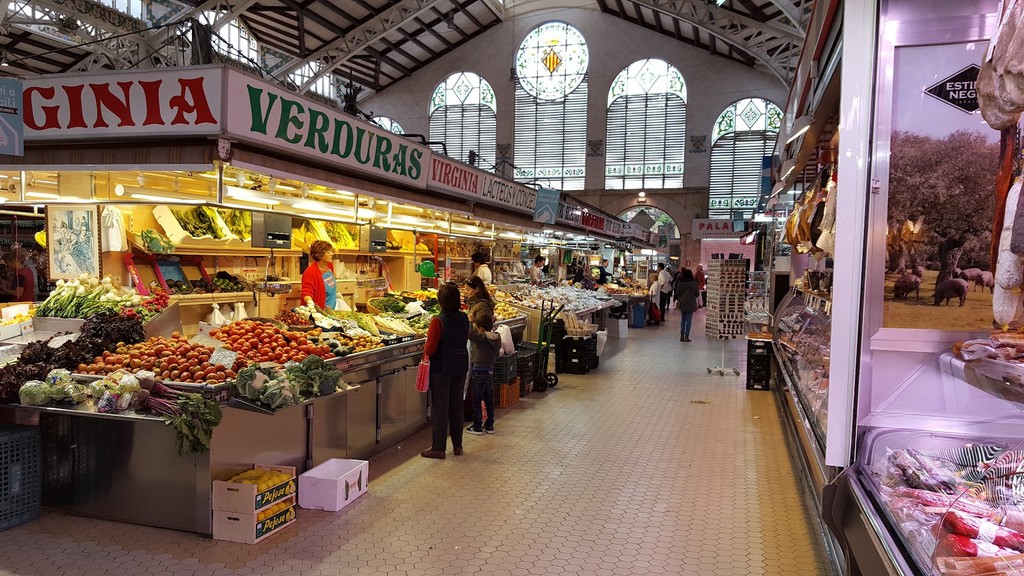
Central Market (Mercado Central) (Source: Google Maps)
The Central Market, an architectural gem of Valencian Art Nouveau design, is one of Europe's largest markets and a culinary paradise. Opened in 1928, it showcases a stunning stained-glass ceiling and intricate tile work. Here, visitors can immerse themselves in local culture by exploring a variety of stalls offering fresh produce, meats, seafood, and artisanal products. The market not only serves as a hub for local commerce but also as a social gathering place, where the vibrant atmosphere and the aromas of fresh food create an unforgettable experience.
La Lonja de la Seda
A UNESCO World Heritage Site, this late Gothic-style building was once the silk exchange and is a testament to Valencia's prosperous trade history.
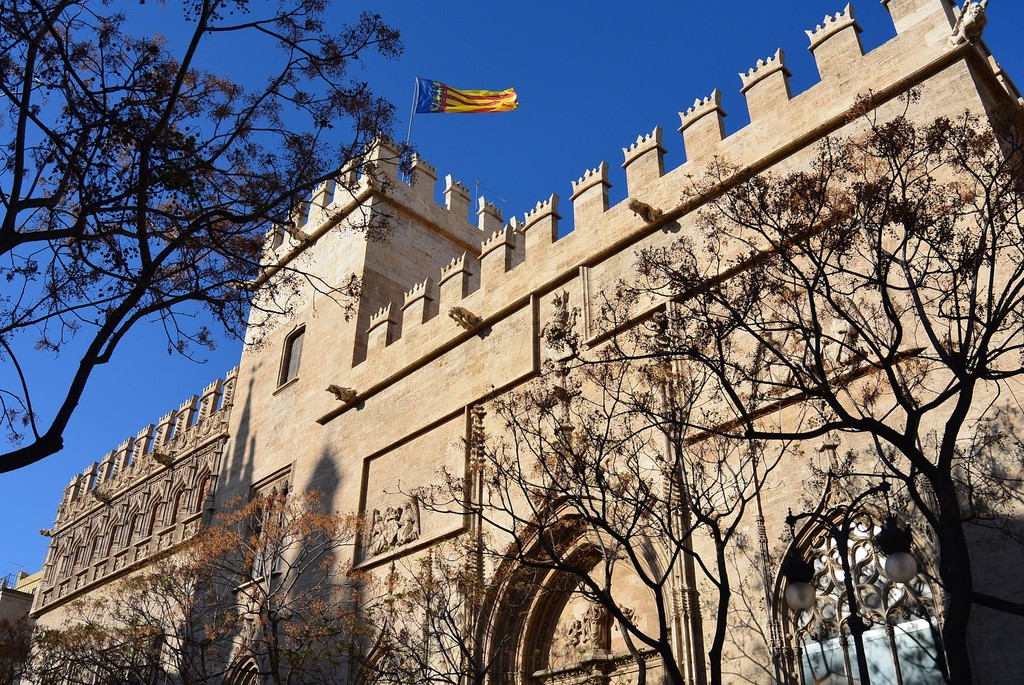
La Lonja de la Seda (Source: Google Maps)
La Lonja de la Seda, a UNESCO World Heritage Site, is a stunning example of late Gothic architecture and a symbol of Valencia's historical prosperity. Built in the 15th century, this former silk exchange reflects the city's rich trading history. The intricate stonework, vaulted ceilings, and beautiful courtyard showcase the artistry of the period. Visitors can learn about the silk trade, which was crucial to Valencia's economy, and appreciate the architectural details that make this site a masterpiece of Gothic design.
Valencia Cathedral and El Miguelete
This cathedral, with its mix of Romanesque, Gothic, and Baroque architecture, is home to the Holy Grail and offers a climb to El Miguelete bell tower for panoramic views of the city.
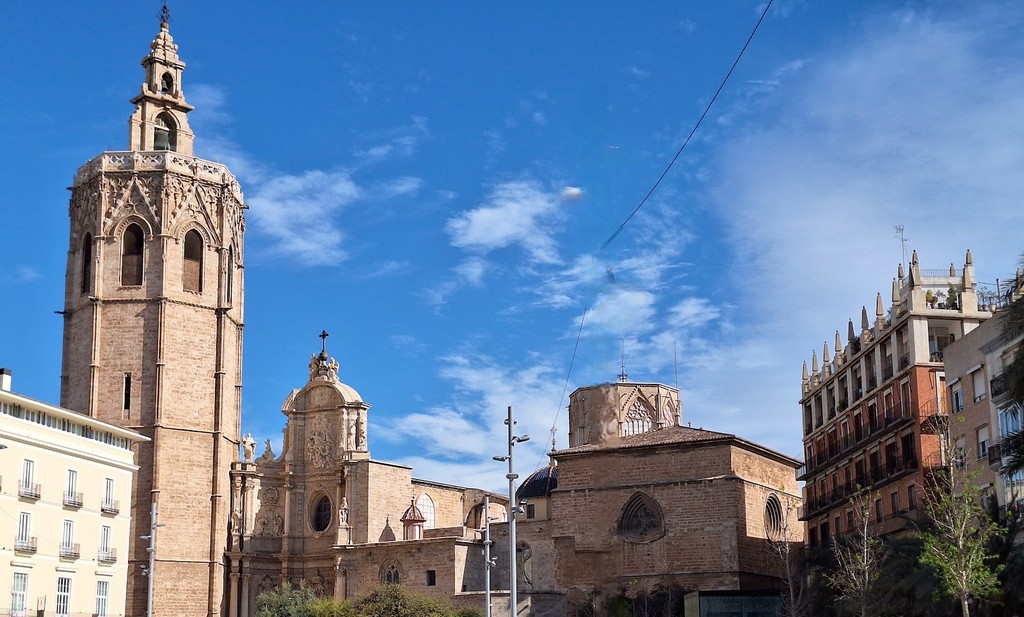
Valencia Cathedral and El Miguelete (Source: Google Maps)
Valencia Cathedral, a magnificent blend of Romanesque, Gothic, and Baroque architecture, is a must-visit landmark. Inside, it houses the Holy Grail, a significant relic that attracts many visitors. The cathedral's tower, El Miguelete, offers panoramic views of the city after a climb of 207 steps. The structure's history dates back to the 13th century, and its various architectural styles reflect the evolution of the city over the centuries. The surrounding area, with its beautiful plazas and vibrant atmosphere, enhances the experience of this spiritual and historical site.
Almoina Archaeological Center
This museum showcases Valencia's ancient history, with ruins dating back to Roman times, providing a fascinating glimpse into the city's past.
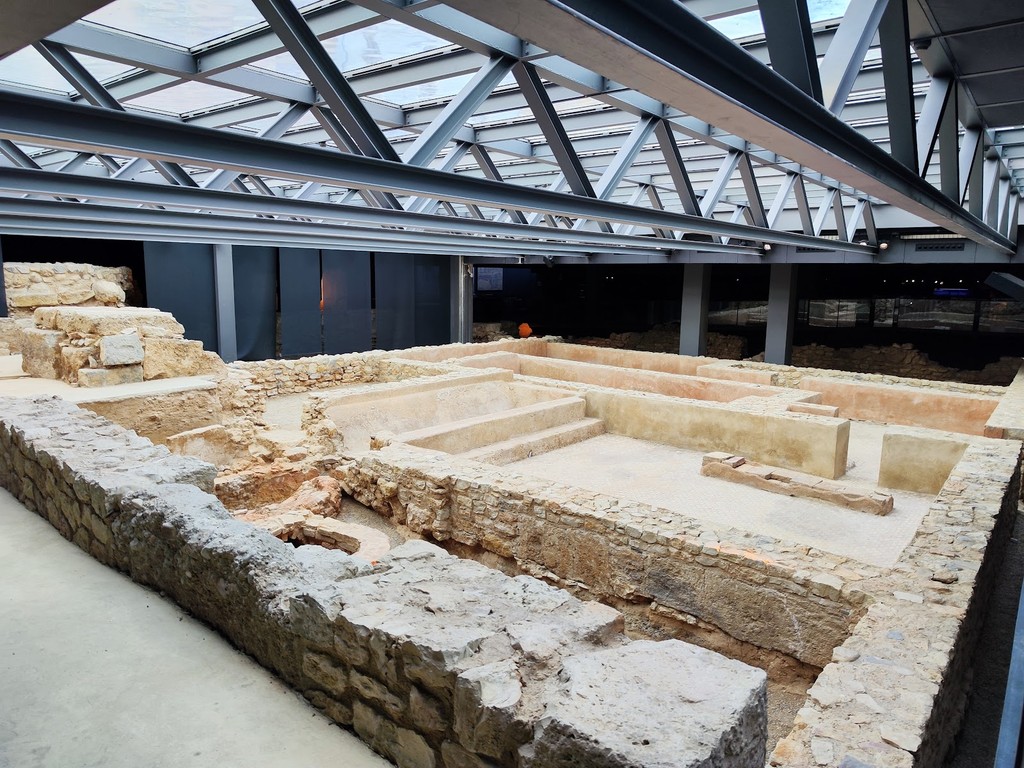
Almoina Archaeological Center (Source: Google Maps)
The Almoina Archaeological Center provides a captivating insight into Valencia's ancient history, showcasing ruins from Roman times through to the Middle Ages. Visitors can explore the remains of ancient streets, public baths, and other structures that reveal the city's evolution. The center features interactive exhibits that enhance the understanding of Valencia's past and its significance in the Mediterranean region. This archaeological site is an essential stop for those interested in history and the rich cultural tapestry of Valencia.
Plaza de la Virgen
Adjacent to the cathedral, this picturesque square is a social hub and features the iconic Turia Fountain, making it an ideal place to soak up the local atmosphere.
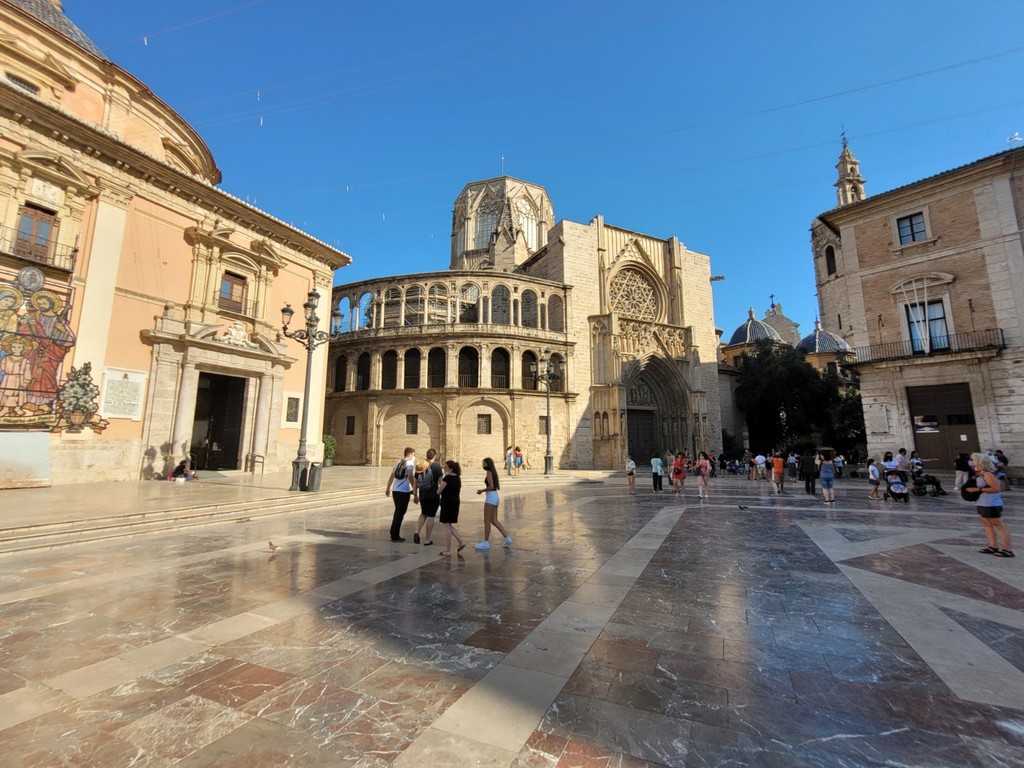
Plaza de la Virgen (Source: Google Maps)
Plaza de la Virgen is a picturesque square adjacent to Valencia Cathedral, known for its vibrant atmosphere and social significance. The square features the iconic Turia Fountain, surrounded by beautiful buildings, including the Basilica of the Virgin. It serves as a gathering place for locals and visitors, hosting various events and festivals throughout the year. The lively ambiance, coupled with outdoor cafes and restaurants, makes it an ideal spot to relax and soak in the local culture while enjoying the stunning architecture around.
Torres de Serranos
One of the twelve gates that formed part of the ancient city wall, these towers offer insight into Valencia's medieval fortifications and provide stunning views of the city.
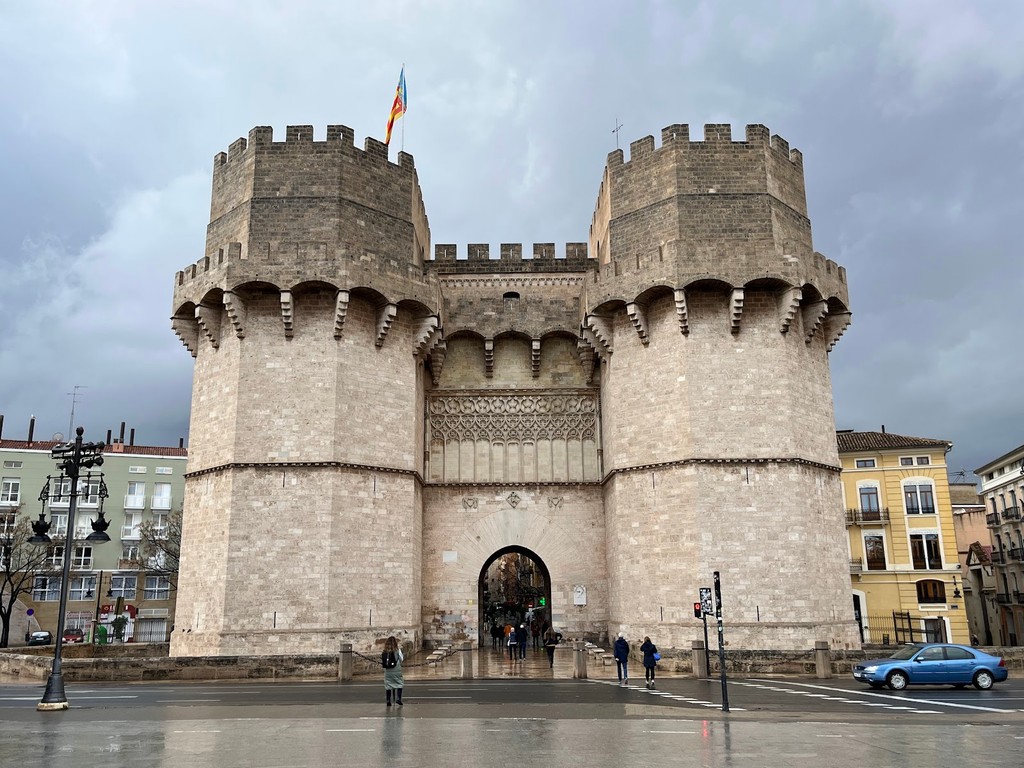
Torres de Serranos (Source: Google Maps)
The Torres de Serranos, one of the ancient gates in Valencia's city wall, stands as a testament to the city's medieval fortifications. Built in the 14th century, these towers offer a glimpse into Valencia's defensive history and architectural prowess. Visitors can explore the towers and enjoy stunning views of the city from the top. The structure's Gothic design and historical significance make it a key landmark, reflecting Valencia's rich heritage and the importance of its fortifications in protecting the city during turbulent times.
Jardines del Turia
This lush green park, created from a diverted riverbed, is perfect for a leisurely stroll and connects many of Valencia's attractions, offering a peaceful respite from the urban hustle.
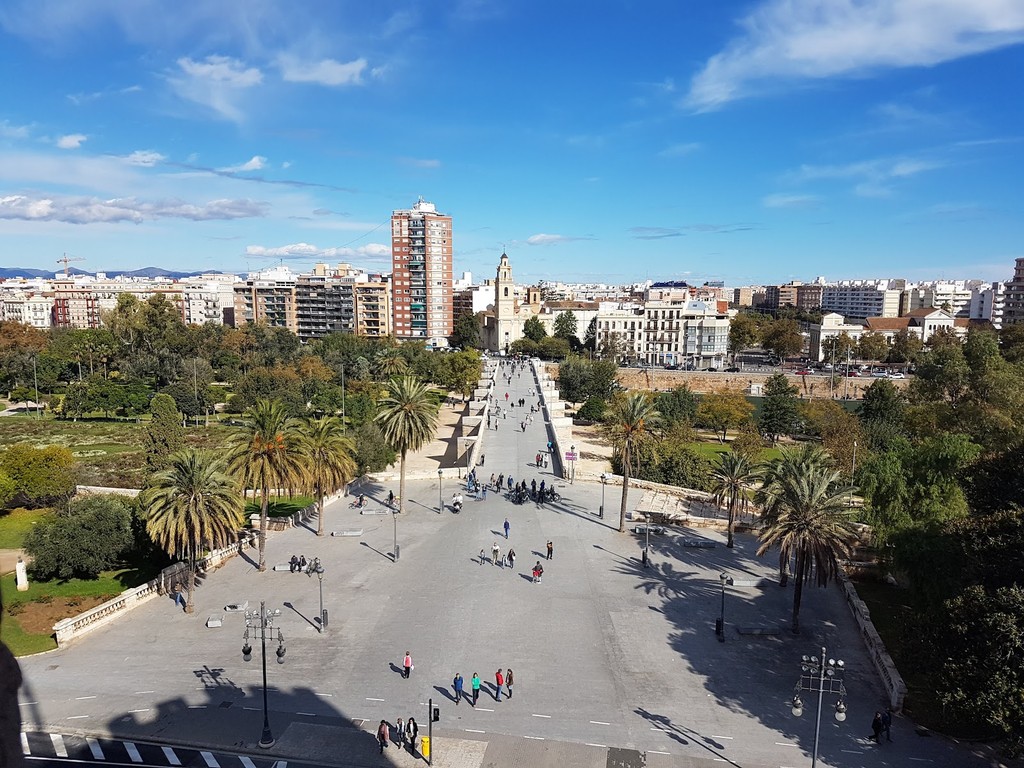
Jardines del Turia (Source: Google Maps)
Jardines del Turia is a unique park created from the former riverbed of the Turia River, which was diverted after a devastating flood in 1957. Spanning several kilometers, this lush green space connects various attractions in Valencia, offering a peaceful escape from the urban environment. The park features playgrounds, walking paths, and gardens, making it a popular destination for both locals and tourists. Visitors can enjoy leisurely strolls, picnics, or cycling while appreciating the beautiful landscape and the integration of nature within the city.
City of Arts and Sciences
An architectural masterpiece, this cultural and architectural complex is a symbol of modern Valencia and features various attractions like the Hemisfèric and the Science Museum.
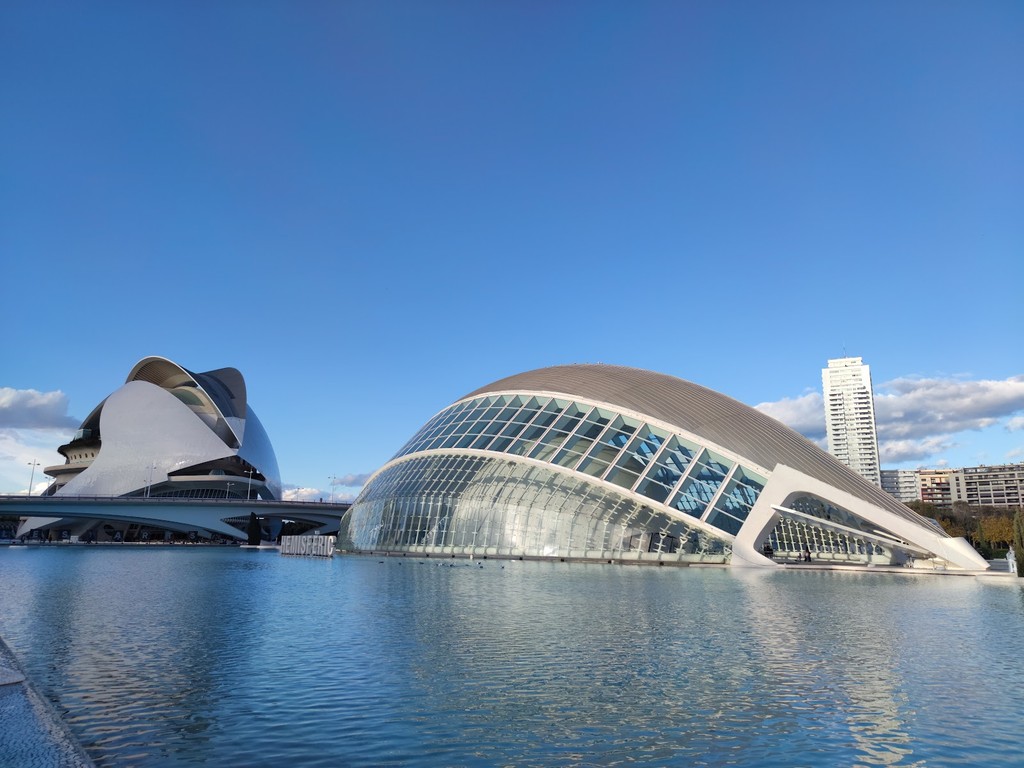
City of Arts and Sciences (Source: Google Maps)
The City of Arts and Sciences is an architectural marvel and a symbol of modern Valencia. Designed by Santiago Calatrava and Félix Candela, this cultural complex features futuristic structures housing various attractions, including the Hemisfèric, Science Museum, and Oceanogràfic. Opened in 1998, it has become a major cultural hub, hosting exhibitions, concerts, and educational programs. The stunning design and innovative use of space make it a must-see for visitors, providing a glimpse into Valencia's commitment to art, science, and education.

Your travels, your rules.
Create your own Free Walking Tours.
Set your preferences, distances and anything you want to do or see.
Completely free, no payment required.